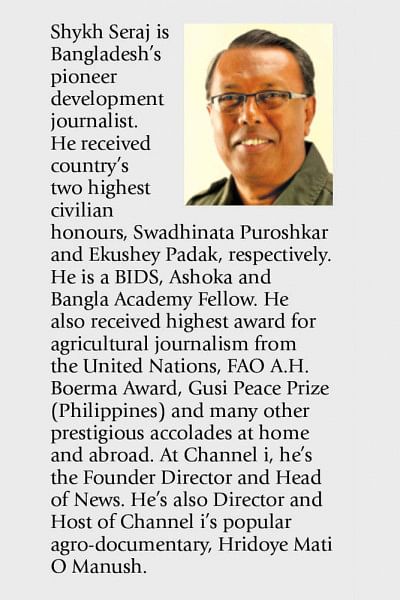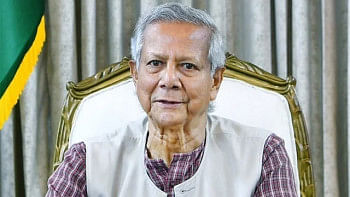All that glitters is pearl

Pearl culture is becoming popular in Bangladesh every year. Especially, from oysters, farmers are producing pearls on a commercial basis and it's showing great hope. Most of the farmers are doing it in their ponds. As we all know, the pearl is used as an ornament, we also know pearl powder is widely regarded as a medicine for many kinds of diseases across the world. What is promising is that many young unemployed entrepreneurs have realized the prospect of pearl culture and by doing it they are becoming financially pretty much solvent. Culture is scientifically done through tissue transplantation. Following this process, China, Japan and Vietnam have been very successful commercially. Scientists say that the chemical properties of the soil and water of our country are also suitable for pearl culture. Back in 2004, there was a detailed documentary, based on pearl culture, aired on Hridoye Mati O Manush (Soil & People in Heart). Bangladesh Fisheries Research Institute (BFRI) played a significant role back then and they have continued to do so.
The prosperity of pearl culture has spread to around eighty entrepreneurs who are doing it professionally by getting trained by BFRI. One such unique entrepreneur is Mohammad Al Mamun, a young man from Bharatpur village in Atgharia upazila from Pabna district. Mamun did his diploma in civil engineering. He had a job, however, to earn a living on his own, he started pearl culture in his pond. He started doing it a year back as he got proper training from the BFRI. Mamun's ancestral fish farming on 40 decimal pond has become a source of income, which seemed inspiring. One interesting thing is pearl culture is not causing any problem to fish farming in the same pond. In the middle of the pond, rows of oysters are being floated with plastic bottles. Mamun rides on a boat to work in the pond.
"Why did you start pearl culture", I asked Mamun.
"I became very much confident after getting the training from BFRI and by watching your pearl culture videos on YouTube", replied Mamun.
"So, what about the market", I asked him.
"Pearl market is pretty good. I have a Facebook page to promote the pearl culture and most of my customers are from either Dhaka or Cumilla. I am planning to reach more districts", replied the young entrepreneur.
"The pearl market is quite good in India and hopefully it will grow in Bangladesh", added Mamun.
Two varieties of pearls are cultured in Mamun's pond; one is called the Design Pearl and the other, the Mantle Tissue or Rice Pearl. The design takes shape within ten months inside the oyster. And it takes at least three years for the rice pearl to take shape. Mamun used a total of 2200 oysters for designs last year of which, 1000 designs of pearls have been ready to go at the market.
"How much was your initial cost for the project", I asked Mamun.
"Tk. 15000 (USD 177)", he replied.
"How much are you looking forward to earning from these 1000 designs", I asked him again.
"If the market goes well, I will earn at least Tk. 300000 (USD 3540)", Mamun replied with a smile on his face.
I was amazed to learn about this profit margin. One of the key strategies to get better production is to pick the right oyster. Four types of oysters can produce pearls in the country so far; especially these oysters can produce four-coloured pearls. Moreover, from one oyster, it's also possible to produce a maximum of twelve rice pearls. Scientific officers have done a great job at BFRI in this regard. I talked with Scientific Officer, Md. Nazmul Hossain, working at BFRI.
"How many entrepreneurs have been trained by BFRI", I asked Nazmul Hossain.
"Under Pearl Culture Development and Expansion Project, we have been able to train 2020 entrepreneurs. The project is still going on", replied Nazmul.
"All these entrepreneurs are working on pearl culture after the training", I asked.
"Only eighty of them are still engaged", replied Nazmul.
"Is this outcome satisfactory for you", I asked him again.
"Not everyone is doing it after getting the training. But these eighty entrepreneurs, all of them have become successful, because not only have they learned about the technology, but also they're well aware of the market that keeps on growing", replied the officer. Pearl farmer Mamun also says all kinds of pearl culture materials are now available in the country. Anyone willing to do this can be successful by culturing pearls at a low cost with proper training from BFRI. There is now considerable demand for pearls at home and abroad. Even if there is any problem in the market or culture system, the solution can be found from the Bangladesh Fisheries Research Institute, says Mamun. He is also planning to increase the area of pearl culture in the future.
I have talked to the local Upazila Fisheries Officer, Md. Shariful Islam about the pearl culture development in Pabna region.
"We're always prepared to provide training and technology; moreover if any farmer wants to talk to me, they call me. I tell them about the potential and encourage them", said Shariful Islam.
"I'm very much optimistic that the unemployed youth will turn around with pearl culture", added Shariful Islam.

The youth group in Bharatpur village is also very encouraged by seeing the success of Mamun. Some of them have already started pearl culture and have continued their jobs. Many of those young people who came to visit Mamun'spond, said they will get the training from BFRI.
Dear readers, I believe that pearl culture in our country can go ahead with great potential with the remarkable performance of entrepreneurs like Md. Al Mamun and also with supports from BFRI. Doing pearls on a commercial basis is no longer any dream, but a reality. I hope that pearl culture technology of BFRI will be disseminated across the country among farmers and entrepreneurs. And I do believe, rural women can also get empowered by learning the pearl culture to contribute to the economy of Bangladesh.
Caption: Young pearl farmer Mohammad Al Mamun beside his pearl culture pond, located at Bharatpur village of Atgharia upazila in Pabna district. Photo: Hridoye Mati O Manush
The writer's short Bio: Shykh Seraj is Bangladesh's pioneer development journalist. He received country's two highest civilian honours, Swadhinata Puroshkar and Ekushey Padak, respectively. He is an Ashoka and Bangla Academy Fellow. He also received highest award for agricultural journalism from the United Nations, FAO A.H. Boerma Award, Gusi Peace Prize (Philippines) and many other prestigious accolades at home and abroad. At Channel i, he's the Founder Director and Head of News. He's also Director and Host of Channel i's popular agro-documentary, Hridoye Mati O Manush.

 For all latest news, follow The Daily Star's Google News channel.
For all latest news, follow The Daily Star's Google News channel. 



Comments